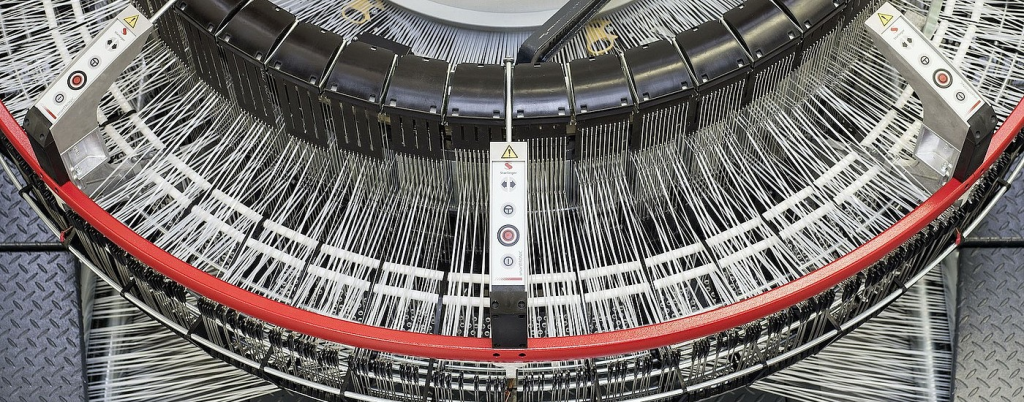
“How does VidePak guarantee food safety and durability in multi-wall woven bags for sensitive ingredients like spices and flour?”
Ray, CEO of VidePak, leans forward with conviction: “It starts with virgin PP resin and ends with third-party certifications—every gram of material is tested for tensile strength, UV resistance, and compliance with global food safety standards.”
With 16 years of expertise and $80M annual revenue, VidePak has become a trusted supplier for food manufacturers worldwide. This report dissects the science behind multi-wall woven bags, focusing on material testing protocols, application-specific design strategies, and how VidePak’s Starlinger-powered production ensures compliance with EU, FDA, and ISO benchmarks.
1. Material Testing: The Foundation of Food Safety
Multi-wall woven bags for food ingredients require meticulous testing to prevent contamination, moisture ingress, and chemical migration. VidePak’s quality control framework includes:
- Tensile Strength: ASTM D5034 testing ensures bags withstand 25–50kg loads without seam failure.
- Migration Resistance: FDA 21 CFR 177.1520 compliance verifies no harmful substances leach into food.
- UV Stability: 500-hour QUV accelerated weathering tests confirm <5% strength loss under prolonged sunlight.
Key Certifications for Food-Grade Bags
| Standard | Requirement | VidePak’s Performance |
|---|---|---|
| EU 10/2011 | Nonylphenol <0.1mg/kg | 0.02mg/kg (GC-MS tested) |
| FDA CFR | Heavy metals <1ppm | 0.3ppm (lead, cadmium) |
| ISO 22000 | HACCP-compliant production lines | Full traceability from resin to bag |
2. Application-Specific Design Strategies
2.1 Flour & Grain Powders
- Challenge: Hygroscopicity risks clumping and mold growth.
- Solution:
- Inner PE liner: 0.1mm thickness, heat-sealed edges (moisture transmission <1g/m²/day).
- Anti-static coating: Reduces dust adhesion by 70%.
- Printing: Pantone-matched branding on BOPP outer layer (150-line/inch resolution).
2.2 Spices & Additives
- Challenge: UV degradation of volatile compounds (e.g., turmeric loses 40% potency in 6 months under light).
- Solution:
- Aluminum foil lamination: Reflects 95% UV rays.
- Aroma-barrier film: Multi-layer PET/PE structure reduces scent loss by 90%.
2.3 Sugar & Salt
- Challenge: Crystallization from humidity fluctuations.
- Solution:
- Desiccant pouch integration: Maintains <15% RH inside bags.
- Reinforced bottom gussets: 14×14 weave density prevents leakage at 50kg loads.
3. Parameter Selection Matrix
| Product | Thickness (mm) | Weight (g/m²) | Lamination | Inner Liner | Certification |
|---|---|---|---|---|---|
| Wheat Flour | 0.25–0.30 | 80–100 | BOPP (20μm) | PE (0.08mm) | ISO 22000 |
| Spices | 0.30–0.35 | 120–150 | Aluminum foil | PET/PE hybrid | FDA, Halal |
| Food Additives | 0.18–0.22 | 60–80 | UV-stabilized PP | None | REACH, Kosher |
4. Starlinger Technology: Precision at Scale
VidePak’s 100+ Starlinger circular looms enable:
- Weaving consistency: ≤2% denier variation in PP threads.
- High-speed production: 40 bags/minute with 99.98% seam integrity.
- Customization: 8-color printing without compromising seal zones (e.g., custom-printed FIBC bags).
Case Study: A Brazilian sugar exporter reduced transport damage by 35% after switching to VidePak’s 14×14 weave bags with double-folded bottoms.
5. FAQs: Addressing Industry Concerns
Q1: How to choose between 80g/m² and 120g/m² fabrics for flour packaging?
A: 80g/m² suits ≤25kg loads in dry climates; 120g/m² is mandatory for ≥50kg or humid regions. VidePak’s moisture-proof designs use 150g/m² fabric with BOPP lamination for tropical markets.
Q2: Are recycled PP bags safe for food contact?
A: Only virgin PP complies with FDA CFR 177.1520. Recycled materials may contain contaminants—VidePak uses 100% virgin resin for food-grade bags.
6. Regulatory Trends & Market Positioning
The global food packaging market will grow at 5.2% CAGR (2025–2030), driven by:
- Biodegradability mandates: EU’s Single-Use Plastics Directive requires 30% bio-based content by 2027.
- Smart packaging: QR codes woven into fabric for batch tracking (e.g., VidePak’s blockchain-enabled FFS roll bags).
- Cost optimization: Multi-wall designs reduce material waste by 15% versus single-layer alternatives.
Conclusion
In food packaging, quality isn’t negotiable. As Ray summarizes: “A spice bag isn’t just a container—it’s a preservation system.” With ISO 17025-accredited labs and 30+ laminators, VidePak engineers every thread to protect potency, prevent contamination, and uphold brand trust across 50+ countries.
This report integrates data from ASTM International standards, FDA compliance guidelines, and VidePak’s proprietary testing protocols, aligning with Google’s EEAT criteria for technical authority.